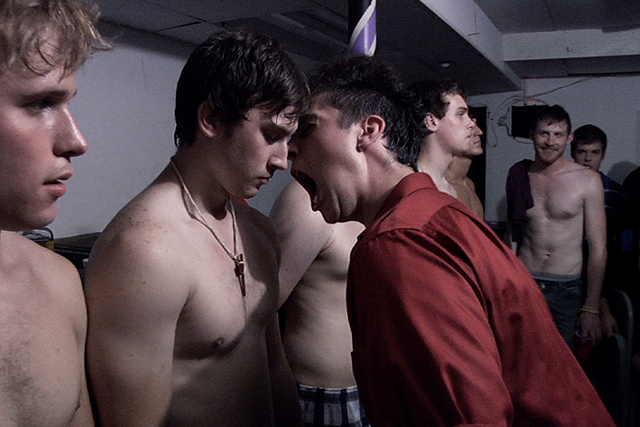
Photo courtesy of Shadywood Road Productions, LLC
College fraternities have long been a standard source of comedy in film. The first major film to popularize fraternity life is arguably 1978’s “Animal House,” the John Landis-directed romp which still looms large in the popular imagination. In recent years, 2014’s “22 Jump Street” and Seth Rogen’s “Neighbors” franchise have continued the trend.
Often filled with troublingly regressive depictions of women, frat-based films have become synonymous with exploitation. Few movies set in the sprawling hallways of college frat houses view their subject through a dramatic and gritty lens.
But “Haze,” written and directed by David Burkman, is one such film. Brutally raw, “Haze” follows Nick Forest (Kirk Curran), a freshman at a prestigious university, as he endures emotional and physical abuse in his effort to become a full-fledged member of the school’s most well-known fraternity. As Nick attempts to maintain his grades while sustaining an increasingly wild social life, his brother – an upperclassman named Pete (Mike Blejer) – attempts to expose the frat’s dark secrets.
Despite the unrelenting – and seemingly unending – violence which occurs onscreen, “Haze” manages to almost always feel grounded in reality. Which, of course, it is: Burkman’s script is based upon his own experiences in a fraternity, and on interviews with other former pledges.
The strengths of “Haze” lie in its technical proficiency: the cinematography and editing are phenomenal. Fast-paced and frenetic, yet never confusing, the film’s camerawork draws the viewer into the characters’ chaotic world of booze, drugs and casual sex.
The movie’s score is excellent, as well. The cold, eerie strains of a choir juxtaposed with orgiastic party scenes are particularly striking.
“Haze” is not without fault. The young actors – most of whom appear torn from the pages of an underwear catalog – turn in serviceable, if not remarkable, performances. A penultimate fight scene between Pete and the frat boys stumbles in its attempt to convey urgency: the Halloween party brawl, filmed from Pete’s drugged perspective, seems more silly than scary.
Burkman’s film, although flawed, is nevertheless an extremely gripping ride. Viewers, like Nick, will become infatuated with the intoxicatingly carnal world the fraternity seems to offer, before realizing they have entrapped themselves in a horror movie.
“Haze” works as both exposé and thriller: moviegoers with strong stomachs and an appetite for realism will find themselves enthralled.
syunker@ramapo.edu





